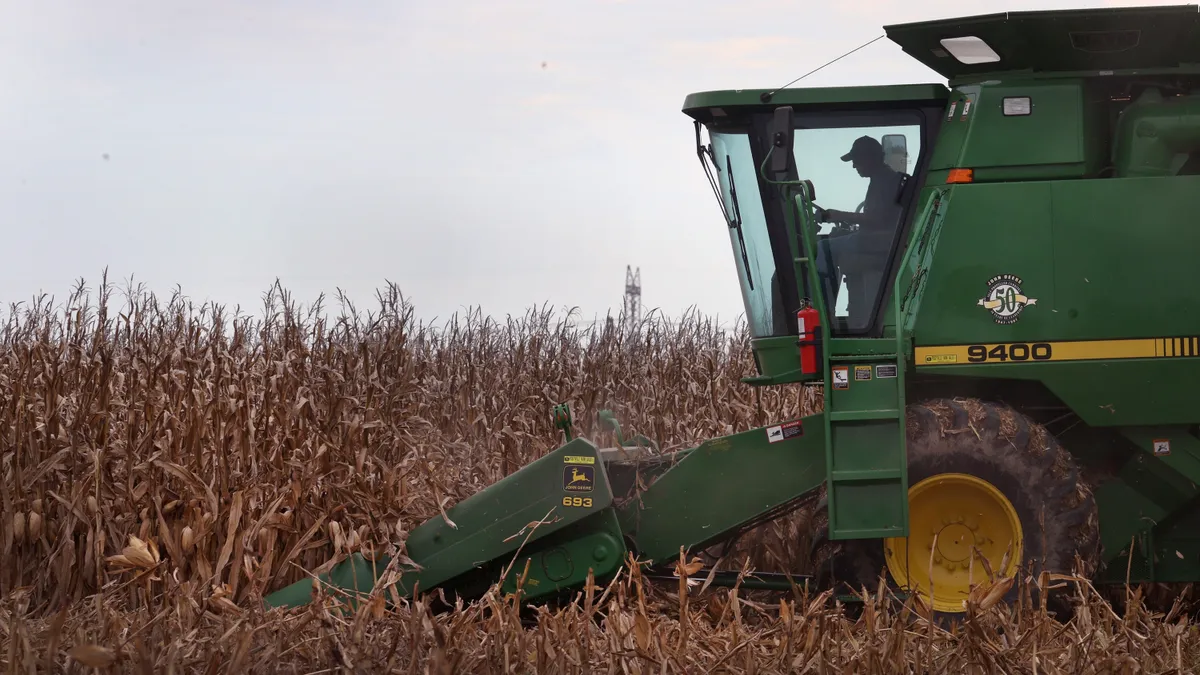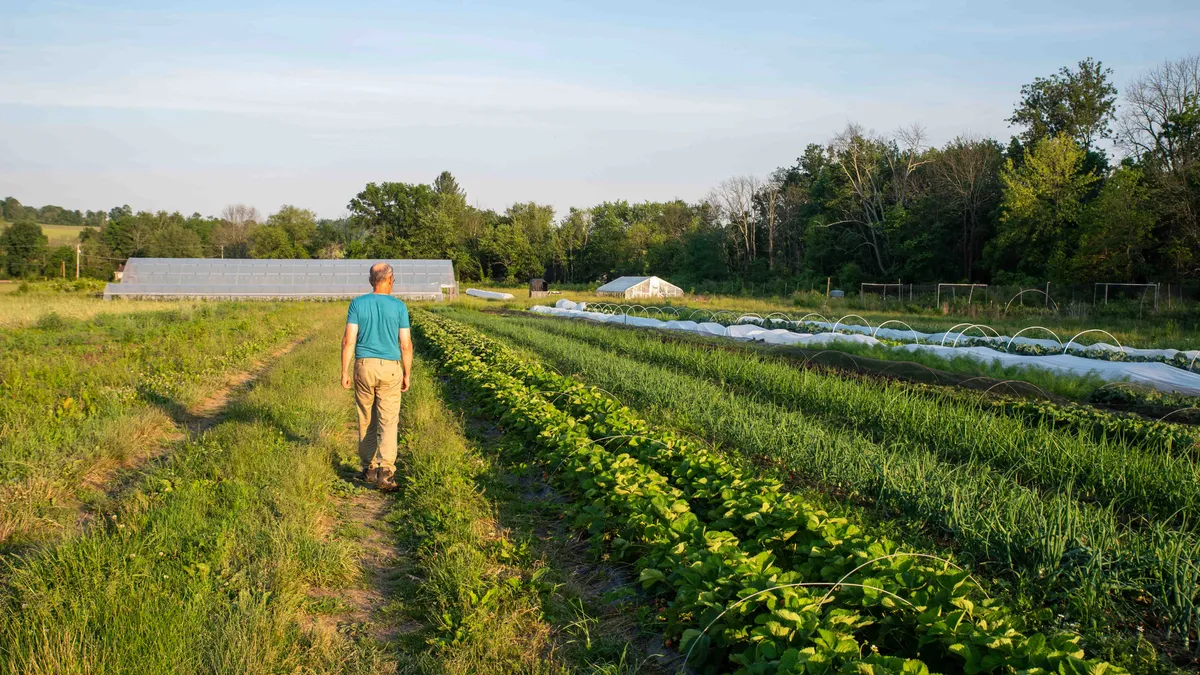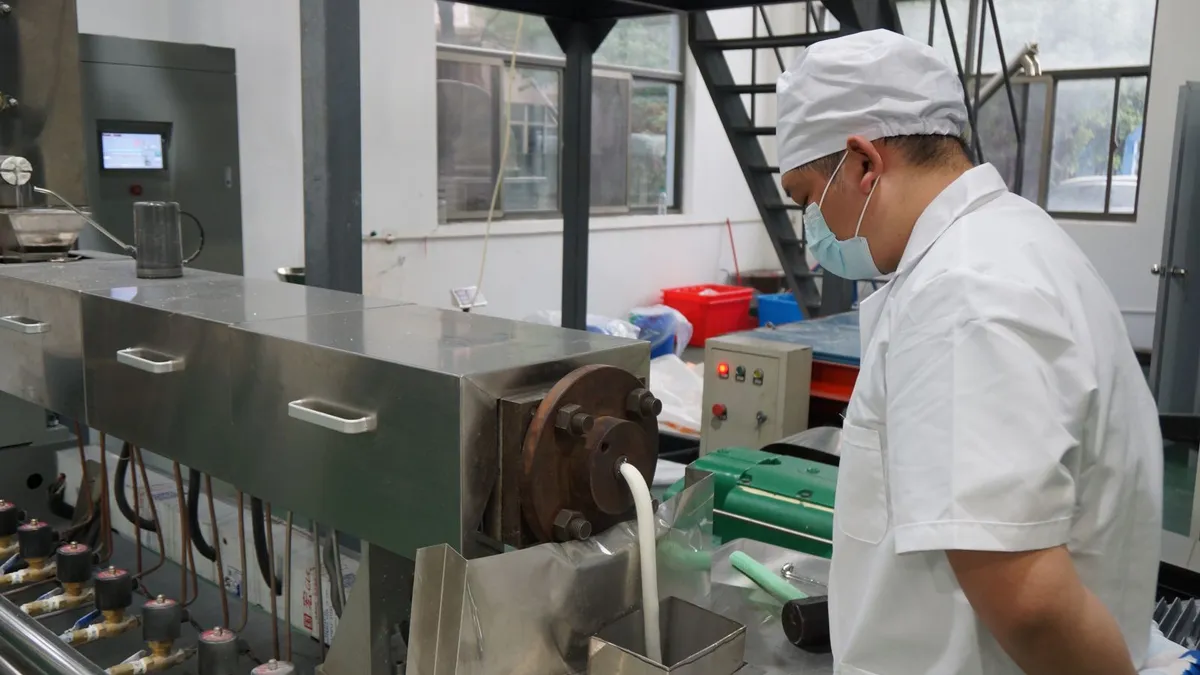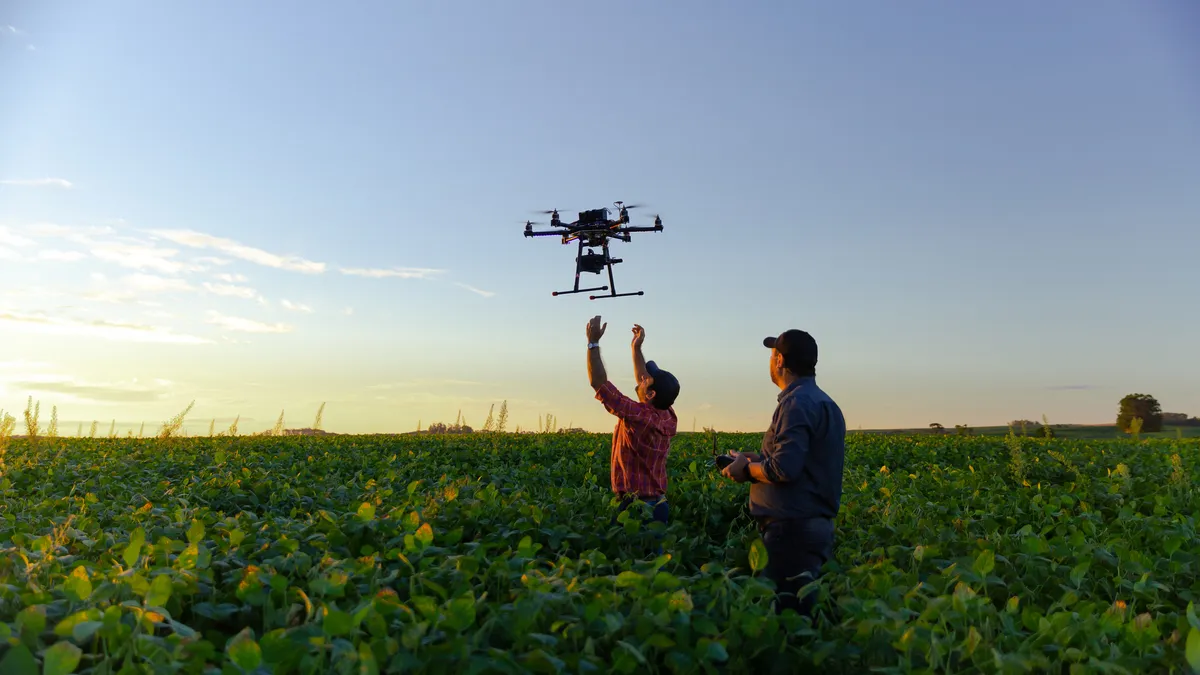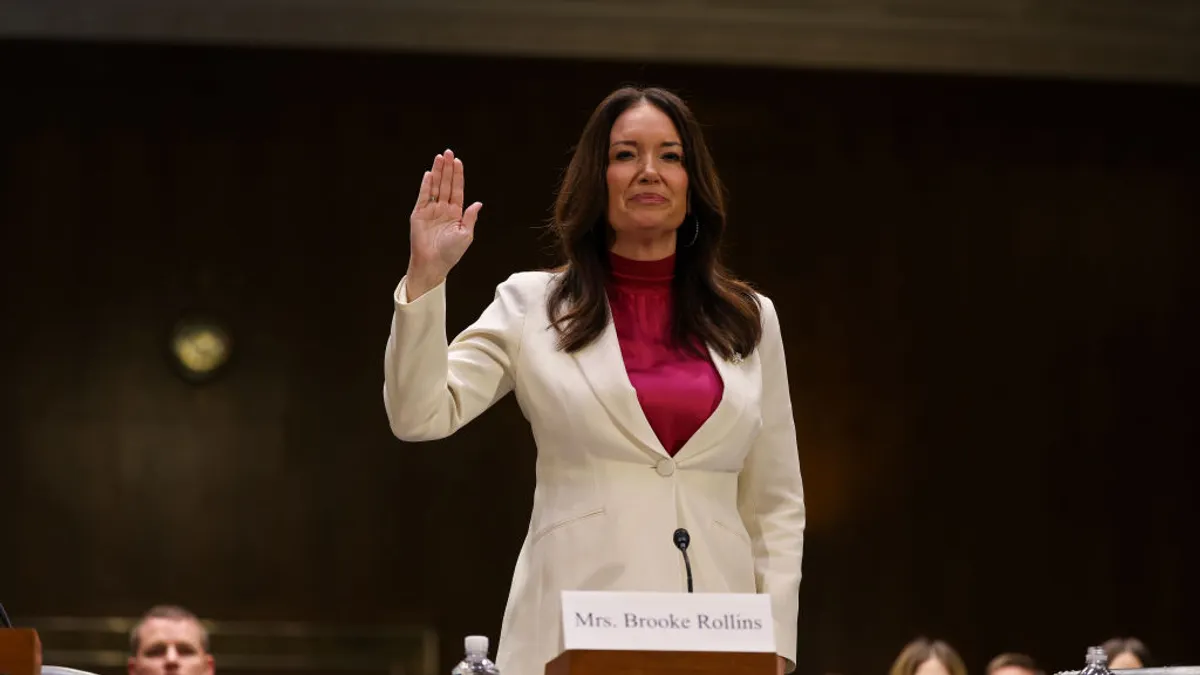The farm bill fight is finally heating up.
House Republicans took their opening shot at the $1.5 trillion spending package last week, releasing draft text that includes several nonstarters for Democrats and will likely face a tough journey to the president's desk.
While Democrats are drawing a line at the House's plans to reallocate food assistance and climate-smart agriculture funding, farm stakeholders are honing in on provisions around commodity insurance, trade promotion and livestock production.
The massive 942-page draft from Agriculture Committee Chairman Glenn "GT" Thompson contains hundreds of policies and marks the latest in the partisan debate over food and agriculture policy. The bill will face its first test Thursday when it heads to congressional markup.
Here's a look at some of the major highlights of the GOP's farm bill draft.
Changing the SNAP funding formula
A House plan preventing future benefit increases under the Supplemental Nutrition Assistance Program has received fierce pushback from Democrats, who say the move would amount to tens of billions of dollars in cuts and make it harder for low-income families to put food on the table.
SNAP participants in 2021 saw benefits increase for the first time in real dollars after Congress directed the Biden administration to overhaul how it calculated assistance levels to include a fuller picture of consumption patterns and dietary guidelines. Republicans are looking to freeze future increases under the funding formula, known as the Thrifty Food Plan, by reinstating a requirement that any changes to benefits be "cost-neutral," or unchanged when adjusted for inflation.
Proposed changes to the Thrifty Food Plan formula are expected to save roughly $30 billion, and would amount to a $7 per month decrease in benefits from 2027 to 2031, according to an analysis from the Center on Budget and Policy Priorities. Starting in 2032, participants will receive $15 less per month.
"Every SNAP participant would receive less to buy groceries in future years than they would under current law, putting a healthy diet out of reach for millions of people," Ty Jones Cox, vice president for food assistance at the Center on Budget and Policy Priorities, said in a statement. "This would be the largest cut to SNAP since 1996 if enacted and these cuts would grow even deeper over time."
Despite changes to the funding formula, grocery and anti-hunger advocates acknowledge the House draft contains several proposals that would expand access to benefits and increase the variety of foods eligible for the program.
The proposal would allow college students to access benefits and ensure that income generated by children under 21 won't count toward a family's overall eligibility. It would also remove a ban that prevents individuals with past drug offenses from receiving SNAP benefits.
The bill additionally adds canned and frozen vegetables to be eligible under the Gus Schumacher Nutrition Incentive Program, which aims to help low-income families purchase more fruits and vegetables.
“At a time when our country is in a produce consumption crisis, it is essential for our federal nutrition programs to be practical and offer support for all Americans,” Alison Bodor, president and CEO of the American Frozen Food Institute, said in a statement.
Removing climate guardrails
Roughly $20 billion was set aside for climate-smart agriculture under the Inflation Reduction Act, and Republicans are targeting that additional funding as a way to boost more traditional farm bill programs.
The House proposal would remove requirements that IRA funding be spent on climate-smart agriculture practices, allowing lawmakers to reinvest the money into conservation programs like the Environmental Quality Incentives Program and the Conservation Stewardship Program. It would also use some of the funds to maintain or launch smaller projects, including programs that aim to eradicate feral swine or encourage landowners to open up their property to public recreation.
Environmental advocates say IRA guardrails are essential to encourage producers to take more substantial steps to transform the food system and make it more climate resilient. Additionally, the reallocation of funding would take away grant opportunities as farmers express record interest in climate-smart agriculture.
"These historic investments maximize the economic impact that food producers have on supporting the U.S. economy," the James Beard Foundation, the Natural Resources Defense Council and the Environmental Working Group wrote in a joint letter to lawmakers. "This funding is crucial in combating climate change, centering soil health, protecting businesses and the supply chain that restaurants rely on, and ensuring the affordability of produce for consumers."
A big boost to the farm safety net
Historic farm profits during the pandemic are eroding fast as the agriculture sector struggles to keep up with volatile commodity prices and rising production costs. In response, lawmakers on both sides have worked to enhance farm safety net programs and make it easier to access subsidies.
The House proposal includes a 10% to 20% increase in reference prices, which is the threshold that triggers subsidy payments under the Price Loss Coverage and Agriculture Risk Coverage programs. It would also expand access to these programs by providing a one-time opportunity to establish base acres for producers who either do not have a base or whose planting exceeds current base acreage.
Changes to base acreage, which uses historic planting data to determine farm program payments for covered commodities, has been politically fraught over the years. Calls to require farmers to update their base acreage to account for more recent plantings have remained divisive due to the potential uneven impact on farms.
The House proposal would also include increases in loan rates for most covered commodities, with substantial raises for crops that didn't see an update in the 2018 farm bill. It additionally enhances disaster programs and expands eligibility for financial assistance.
Funding to increase subsidies would come from a controversial plan to halt the Agriculture Secretary's discretionary spending power under the Commodity Credit Corporation, which has been used to dole out trade relief payments under the Trump administration and climate-smart commodities programs through Biden.
The American Sugar Alliance and other agricultural groups lauded the House plan for significantly boosting the farm safety net in light of declining profits.
"This effort, particularly the farm safety net features for sugarbeet and sugarcane farm families in Chairman Thompson’s bill, merits lawmakers’ strong support," said Patrick Frischhertz, president of the American Sugarbeet Growers Association in a statement.
Enhancing trade
Increasing funding for trade promotion was at the top of farm stakeholders' wishlist as China slows commodity purchases and exporters look to offset losses by entering new markets.
The House proposal would double funding for the Market Access Program and the Foreign Market Development Program, the first significant increase since the mid-2000s, according to an analysis from Holland & Knight. The export promotion programs were the most member-requested items in the Agriculture Committee's online portal request.
Beyond expanded funding, Thompson's bill would allow eligible trade organizations to enhance cold chain infrastructure and make other improvements to the supply chain that would remove barriers to agricultural trade.
It would also wade into a longstanding debate over the right of U.S. producers to use common names like parmesan, feta and asiago for their cheese. Under European law, for example, only producers in areas around Parma, Italy, can use the name parmesan, which U.S. exporters say limits their ability to participate in the market abroad.
The House farm bill directs the Agriculture Department to include the protection of commonly used terms as a priority in international negotiations.
“It is critical that Congress continue to prioritize improving market access and stand up for American dairy farmers and manufacturers,” Krysta Harden, president and CEO of the U.S. Dairy Export Council, said in a statement.
Taking aim at Prop 12, enhancing bird flu preparedness
The House bill contains several provisions meant to enhance U.S. response to a devastating bird flu outbreak that has spread to dairy cattle, by providing more funding for animal disease detection and response programs. It also directs the USDA to negotiate animal disease trade agreements with other countries as trading partners carefully monitor the spread of bird flu in the U.S.
The proposal also controversially looks to roll back some of the impacts of California's animal welfare housing law Proposition 12, which sets standards for raising pregnant pigs and egg-laying hens.
The law, which survived a Supreme Court challenge last year, requires meat producers across the nation to be compliant with Prop 12's housing requirements in order to access the California market. Farm groups have warned the law would raise consumer prices and add to crushing expenses that have already roiled the industry.
Thompson's proposal would clarify that states can only regulate livestock production occurring within their boundaries, allowing meatpackers outside the state to still sell in California even if they're not Prop 12 compliant. Animal welfare groups say the proposal is a federal overreach of power that circumvents the will of state voters.
"If this language stays in the Farm Bill, millions of farm animals will be forced back into cages while thousands of independent, higher-welfare farmers will be further disadvantaged in an already incredibly consolidated marketplace unfairly dominated by factory farming," Nancy Perry, senior vice president of Government Relations for the ASPCA, said in a statement.



